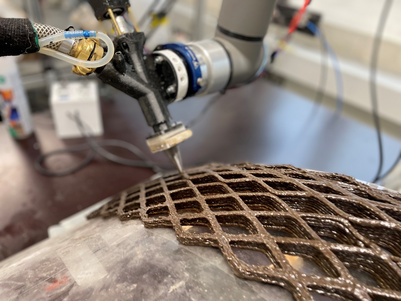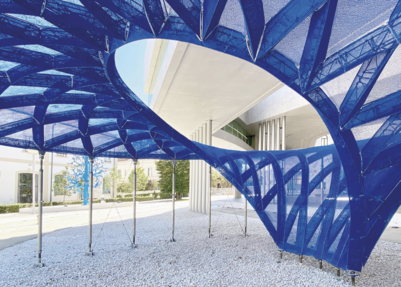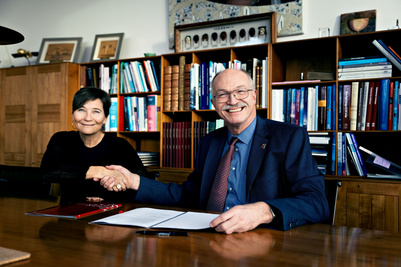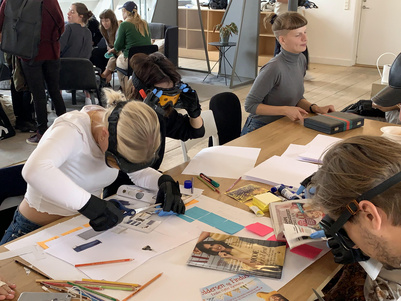Creative career trajectories. Modern art requires inventiveness
KADK graduates get ideas, test new concepts and reinvent methods and processes. They create unique value, whether they start their own business, or work in the private sector or for the state and local municipalities. Meet Kathrine Segel, a conservator of contemporary art and sculpture, who works at the National Gallery of Denmark. Read about her job and how she got it.
Conservation of modern art… The difference is that the artist is often living. This means we can discuss the works with the artist instead of analysing and arriving at a plan of action, when a work gets damaged or is simply ageing.
I spend a lot of time… preparing works for exhibitions here or for when they are loaned out to other museums. I also conduct loads of condition reports, which involve a visual examination of a work. They guarantee that the work was in a particular condition when we received or despatched it. And that can be important if damage occurs.

The public are very interested … in many of the more recent works, and that creates wear and tear. So our work involves a lot of everyday maintenance of the collection.
There are two conservators… in my department, and we work with all sorts of materials. Right now we have works in plaster, bronze, neon tubes and a lot of plastic and foam materials. They make demands on our inventiveness, because we cannot possibly be experts in every single material, and many of the materials simply don’t have a long shelf life. For example, we have a work with neon lights. We cannot bend any missing neon tubes. So we have to find the expertise elsewhere.
It is a bit of a dream job … because there are not many workshops in Denmark that work with contemporary art. I am very happy to be part of a large institution, because in other places you use much more time on practical conservation, while I also spend time on paperwork. I think it is really fascinating. It also given me the opportunity for some occasional research.
I have always been interested in contemporary art … so I applied for an internship in a museum with a modern collection and to find work either in Denmark or abroad that was related to contemporary art. I worked with a lot of materials I was not trained for. Finally, this led to a job at the National Gallery of Denmark.
You should not be limited by… whether you have studied this or that. Sometimes you may get a job that simply “smells a bit fishy”, and then it leads to something else. So be open to the possibilities provided by the profession and you will end up in many fascinating places.
Get a business partner from KADK
At KADK the business community is a close business partner. The School has a long tradition of partnerships with companies and institutions that benefit from the expertise of our students and graduates. There are countless opportunities for working together with a student from KADK.











